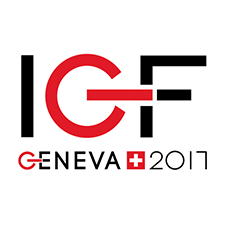Fake news and possible solutions to access information, discussion led by Young IGF (WS134)
20 Dec 2017 09:00h - 10:00h
Event report
[Read more session reports and live updates from the 12th Internet Governance Forum]
Moderator Dr Walid Al-Saqaf, Senior Lecturer at Södertörn University, started by stressing that the session would have a future orientation and that the aim was not to offer easy solutions but to analyse the problem in detail. Similarly, while this panel focused on new technologies in countering fake news, such as blockchain, he stressed that suitable responses will never be of a purely technical nature.
The first speaker, Ms Nadia Tjahja, Member of the Executive Board at Young European Leadership, emphasised that it is important to have a working understanding of what exactly the issue is in order to address it. Aiming to provide such an understanding, she argued that combating fake news is about addressing the ‘information disorder’ we face, including echo chambers and filter bubbles. She identified three elements of fake news: false information (factually incorrect information which is produced by mistake), misinformation (factually incorrect information which is spread deliberately), and malicious information (factually correct information of, for example, a private or confidential nature, that is deliberately spread to cause harm). She argued that understanding these distinctions can help to provide better responses. Fact checking, for example, only addresses misinformation, whereas source verification is relevant to all three types. She stressed that we need to ‘engage with information in an informed manner’ through critical reflection and through widening our sources. Later in the discussion, she also suggested that we should try to better comprehend what other societies understand as truth and what the principles of this understanding, such as trust in leaders or a focus on the well-being of the community, are.
The second speaker, Mr Krishna Kumar Rajamannar, Internet Society, Chennai Chapter, argued that any response to fake news has to stand on two pillars: technology and people. With the growth in information technology and applications, we have also seen a growth in the complexity of communication. He argued that bridging the gap between technology and people will be the key task of the future. Any technology, such as blockchain, has both advantages and disadvantages and the question is how we put it to use to counter fake news. He argues that technology is only a tool and that people need to be put at the centre.
Ms Yolanda Mlonzi, an emerging leader in Internet governance in South Africa, questioned the very notion of fake news. She argued that it might be a matter of perspective; someone’s truth might be another person’s fake news. She also stressed that fake news is not a new phenomenon at all. She advocated for encouraging a plurality of views and the empowerment of citizens and communities to form their own opinions based on this. She also cautioned that we should not place our trust in established media or technological solutions, such as algorithms. Biases can be found in all places and it will take critical thinking to balance this. She also reminded the audience that in many regions of the world access to the Internet is still not guaranteed and that promoting digital literacy is also an important element in countering fake news.
Al-Saqaf used the example of blockchain to highlight how technology can provide part of the solution. He explained that we can imagine blockchain technology as operating similarly to how a ledger is kept at a bank. All transaction are recorded in sequence without erasing the record of previous transactions. However, in contrast to how a bank ledger is kept, in the case of blockchain an identical copy is kept with each client. This means that there is no centre of control over the contents of the ledger and that the contents cannot be altered after they have been entered. This principle can apply to money, but also information and news. Based on this, he argued that blockchain technology is a useful counter to the centralisation of power over news and information. In this way blockchain can contribute to countering fake news by focusing on those aspects of the spread of fake news that are related to monopolies over information and news.
Ms Arda Gerkens, Senator at the Dutch Parliament, argued that in order to support public trust, politicians should be transparent about their use of digital tools. She cautioned that many of the responses to fake news address the highly educated and leave other people behind. She also pointed out that she has concerns about addressing fake news through legislation as this might impact freedom of speech.
All in all, the discussion encouraged a critical engagement with the idea of fake news. Fake news was discussed as a problem that concerns digital media as much as established media outlets. It was also stressed that it is important to distinguish between various forms of fake news as there is a big difference between misinformation and hate speech.
By Katharina E Höne
Related topics
Related event

